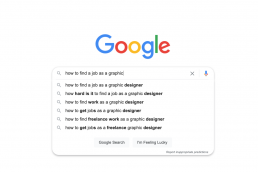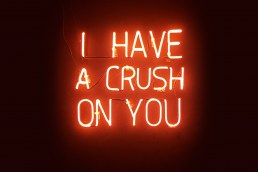Reading time
The most important skill any designer should learn.
“That project is a pain in the ass; the outlet team is so difficult to convince and they always go for the shitty ideas.”
As a graphic designer, you will have to deal with people you don’t like. We are human beings: we can’t be liked by everyone. When you have to work with these people, you must keep a healthy and strictly professional communication and negotiation. It is not an easy task, because it requires a lot of energy from both of you in order to make things happen.
I used to be awful at dealing with people I didn’t like. I took my work seriously, which somehow, made me take everything somewhat personally. I used to frustrate myself because I believed strongly in what I was presenting, and I had no patience for getting interrupted in the middle of a presentation and dealing with a comment that made no sense or was inappropriate.
I had to learn the hard way that no matter the circumstance, an emotional reaction is neither professional nor friendly, and will make future work relationships harder, since it puts you both in a defensive position.
I realized that, if I wanted to make it, I had to be better at winning people over within the organization.
One of the first things I learned was that in a professional situation, your best bet is to observe first and react second. Always make the people you work with feel heard and respected. Even if their opinions have no value at all.
As I practiced observing and listening during my meetings, I started to see that many people love to perform, especially the ones with some sort of authority. You can feel how they are listening to the sound of their own voice – it’s like an acting exercise that they practiced in front of the mirror that morning.
Next to the ones with some authority, are the medium-weight employees who also love to feel important in the eyes of their colleagues. They feel they must give their opinion and criticism, even when it is not really necessary. Very often, these people participate in meetings with the sole intention of being listened to and of saying something, otherwise they will feel they are not adding anything to the company. Wanting to feel important is just a part of the human condition.
Once I took into account all that I learned, my presentations and general behavior towards opinionated people changed. Whenever I was presenting and I got suggestions, requests or feedback that I thought were useless, I started using a few key sentences to make people feel significant:
“Sure, we will look into it”… “Your comments are well-noted”… “Good point”… “We will take your suggestions into consideration”… “Interesting point of view”… “Good thinking”… ”I need to discuss that further with the Creative Director, but will see what we can do”… etc. etc. I started to sound like a sales guy.
Slowly, I got to a point where I ignored most of the notes and comments I didn’t agree with, and just did what I thought was right. To my surprise, hardly any of those comments were ever brought up to the table again, and when they were, I made sure to appreciate the positive side (there is always a positive side to everything) of their idea and then explained why it couldn’t be implemented for whatever reasons I could come up with. Only when they insisted I would then try to find a point in between that would make us both happy.
I started to sound like a sales guy.
My presentations, and professional life in general, changed to a point I would have never imagined: people that I used to dislike became my friends – they even came looking for my approval, being respectful when making a comment or requesting a change.
This is what you would originally expect since we are all professionals, but actually it is far from the reality. You have to earn their trust and friendship first.
So my recommendation is to make the effort and learn the skill of dealing with people first, and leave talent and other skills as secondary. And I agree, it takes a lot of energy, but it is possible and it will make all the difference helping you to “make it”. This way, instead of getting caught in all of those layers of hierarchy, you can manage your way to only battle with the final decision-makers. Which is the ideal way to achieve high efficiency and great creative work.
I love this quote from advertising executive and author Howard W. Newton: “Tact is the art of making a point without making an enemy.”
I offered to take the project for the outlet team though everyone warned me of how awful it could be. I simply applied the concepts I had learned, which were pretty simple:
- Listen
- First take the point of view into account, and work from there
- Be curious about their reasoning and ask questions about it
- Note all they say (or not)
- Digest it all
- Come back with a solution that benefits the brand objective and us both (or make them believe so)
This sounds logical and it’s common sense. The problem with this particular project was that the outlet team of my company had a history of feeling ignored by the creative team. In the previous season, for example, they only had one request and it was still not addressed properly.
After many rounds of back and forth, the creative team – exhausted by the constant fighting – ended up doing what the outlet team asked them to do, simply to get rid of the project as soon as possible.
This kind of dynamic never ends well, because in general the client knows what they need, but they don’t know how to make it happen. When the creative team stopped designing and started only pleasing the outlet team, the project became a loop of constant changes that didn’t satisfy anyone.
This time around, the outlet team told me they just wanted big typography to announce the latest offer, because of distance and consumer needs. It made sense to me, so right from the first meeting I listened to their requests and offered a solution based on their needs.
Their reaction to the first proposal was one of relief, they felt at ease, they had been preparing to fight again but they didn’t have to: there was no fight. The final result of this first campaign was good but not great, but I let it go because I considered it a huge step in winning their trust.
That step opened the doors to do what I really wanted to do next, which was to make the outlet team look as premium as any of the brand’s other communications. I didn’t understand why the outlet communications were all based on looking affordable/cheap, when they were selling the same premium brand. The goal was to make it feel as sophisticated as the seasonal product, just at a different price.
How did I make this happen? While we were shooting the first season, I asked the photographer if we could slide in one quick still-life shot (this seems easy but it means a lot when you are working with big teams, you are using everyone’s time. And time at that scale means quite a bit of money). He agreed, and we set up a quick shoot at the end of the day. I wanted to send the outlet team our agreed images, plus the new one, just to see their reaction.
It worked. The entire team said they loved the last image, that it would look great everywhere… a lot of excitement from their side.
So I managed to sell a new direction when originally no one gave a shit about the outlet team. When we started working together on the new route, everything was a different story, everyone was positive and empathetic, and it ended up being a pleasure to work with them and we were all enthusiastic about the results.
The highlight of the last season we did was when we pissed off someone from the top of the company. He saw our work, and his comment was: “what the hell, how come outlet has better campaigns than our main product???”









